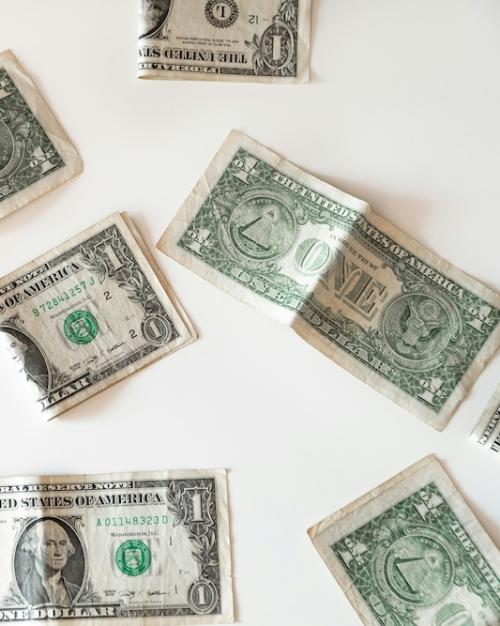In a year marked by a U.S.-sparked tariff roller coaster, trade war murmurings and market fluctuations, much of the world is joining economist Ryan Chahrour in thinking about questions that have been on his mind for years: How do people’s beliefs drive economic events? And what makes the U.S. dollar special – and dominant – in world trade?
“It’s a moment of nervousness,” said Chahrour, the Ernest S. Liu Professor of Economics and International Studies in the College of Arts & Sciences. “Right now, it’s mostly about expectations. Current tariffs on China matter, but it’s the expectations of what’s coming six months down the road that’s really driving things and having a chilling effect.”

While Chahrour could not have predicted the volatile policies and market dynamics of spring 2025, he has been studying related scenarios. In a 2024 paper, he explored what it would take to dethrone the U.S. dollar as the dominant currency. Current events have not conspired to do quite that, but scenarios he once thought beyond possibility have come within range. And in a National Bureau of Economic Research (NBER) working paper, he is examining how economic news feeds into exchange rates, revealing that “the period of anticipation of some change can be very different from the period when the change actually happens.”
“Ryan is one of the first scholars to recognize the relationship between trade and the cost of financing government debt,” said Seth Sanders, the Ronald G. Ehrenberg Professor of Economics and Donald C. Opatrny ’74 Chair of Economics. “He has studied it extensively, including whether the U.S. can maintain its dominance as the medium of exchange or whether the yuan will emerge as a second currency with different spheres of influence,” Sanders said. “His conclusion is that this depends largely on trade policy.”
Expectations drive economic events
People’s expectations of the future matter tremendously for what’s happening today in the macroeconomy, Chahrour said.
The expectation of a downturn is sometimes enough to cause a downturn, as happened in the 2001 recession following the boom years of the late 1990s. In recent weeks, he has seen this dynamic at work once again, as the current U.S. presidential administration has set and rescinded tariffs in rapid succession.
“What we’ve seen since the [2024 U.S. presidential] election was first a period of optimism, which I think was a self-fulfilling moment. People were optimistic, the stock market was doing quite well,” he said. “Then the news started to arrive about tariffs.”
Chahrour said it’s been fascinating (at least from a research point of view) to watch markets process great uncertainty caused by unexpectedly high tariffs. Uncertainty is hard to measure, but economists are starting to gather anecdotal evidence that investors, firms and ordinary people are hesitant to act. For instance, they’re looking at whether companies are opening new factories overseas or in the U.S. or if companies are waiting to hire new workers.
As his NBER working paper “Exchange Rate Disconnect Revisited” points out, the wait-and-see phase anticipating change is different than the phase where the change actually happens – but has real effects. “Now, we have a period of anticipation of tariffs and worry about tariffs, and we have the dollar depreciating,” Chahrour said. “It will be interesting for me to see whether, if policy settles down with high but stable tariffs, will that depreciation reverse?”
Dethroning the dollar
The U.S. dollar holds a special, dominant position in world trade, and has since World War II, Chahrour said, because everybody uses it (a self-fulfilling element that connects to his research on the power of expectations.)
It would be very hard for the dollar to ever lose its special role, Chahrour determined in a research project conducted from 2016 through 2021. But in a paper in IMF Economic Review last year, “The Dollar in an Era of International Retrenchment,” he modeled out what it would take to dethrone the dollar in a world divided into two blocs, east and west – a situation that started to take shape especially after the Russian invasion of Ukraine.
Among several experiments Chahrour and his collaborator did in the paper was one on tariff policy – but their experiments were mild when compared to this year’s real-world news.
“We always assumed the U.S. would put tariffs on China and China’s allies, and would convince its own allies to do the same – instead of the U.S. putting tariffs on the whole world. We didn’t entertain that possibility,” Chahrour said.
The paper’s bottom line: if China is willing to open its capital markets and encourage people to hold its currency all over the world, or at least in its region, then there would be a threat to dethrone the dollar. But in his experiments, the tariffs required to threaten dollar dominance appeared unrealistically high.
“I told my students, ‘relax, the shocks would have to be this big’ in order for the dollar to get in trouble. Six months later, I said, ‘here we are, and the shocks are this big!’”
The drastic tariffs imposed by the U.S. in April, although scaled back, have opened the door for another economic power – China or Europe – to step into a role challenging U.S. dollar dominance, Chahrour said, and he sees evidence in the data. Normally, financial stress makes the U.S. dollar appreciate, even if the U.S. is causing the financial stress. Now, we are seeing the opposite, with the dollar depreciating against other currencies, Chahrour said.
“It’s the dynamics around that depreciation, signs that countries are selling U.S. assets and treasury bonds, that scared Trump and his team to back off a little,” Chahrour said. “They have some awareness that these dynamics could be at play and that would be a difficult transition.”






